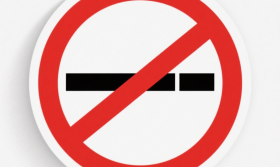The Unseen Risk: How Tobacco Use Amplifies Side Effects of Blood Pressure Medications
If you're among the millions managing high blood pressure, you're likely familiar with the routine: regular check-ups, dietary adjustments, and a daily regimen of antihypertensive drugs. These medications are lifelines, diligently working to protect your heart, kidneys, and brain from the silent damage of hypertension. But what if a common habit was secretly undermining this careful management, not just by raising your blood pressure, but by turning the very treatment meant to help you into a source of new discomfort? This is the hidden danger faced by individuals who use tobacco while on blood pressure medication.
The link between smoking and high blood pressure is well-established. Nicotine, the primary addictive substance in tobacco, is a powerful stimulant. It causes your adrenal glands to release a surge of adrenaline, leading to a temporary spike in heart rate and blood pressure. But the relationship between tobacco and hypertension management is far more complex and insidious than this immediate effect. It extends deep into your body's biochemistry, directly interfering with how you process and respond to your essential medications, significantly increasing the incidence and severity of adverse reactions.
Understanding the Metabolic Interference: Tobacco's Role in Drug Processing
To grasp how tobacco exacerbates side effects, we must first understand a key player in your liver: the cytochrome P450 (CYP450) enzyme system. Think of this as your body's primary detoxification crew. It's responsible for breaking down a vast array of foreign substances, including approximately 70-80% of all prescription drugs. Many common antihypertensive medications are metabolized by a specific subset of these enzymes, particularly one known as CYP1A2.
Here’s where tobacco comes in. The polycyclic aromatic hydrocarbons (PAHs) found in tobacco smoke are potent inducers of the CYP1A2 enzyme. This means they signal your liver to ramp up production of this specific metabolic worker. When you are a regular tobacco user, your liver is essentially in a state of constant overdrive, metabolizing substances at a hyper-accelerated rate.
Now, let's introduce your blood pressure pill into this scenario. If your medication, such as a beta-blocker like propranolol or a calcium channel blocker like verapamil, is a substrate for the induced CYP1A2 enzyme, it will be broken down and cleared from your bloodstream much faster than intended. This rapid metabolism of antihypertensive drugs leads to a critical problem: your body isn't exposed to the therapeutic levels of the drug for a long enough period to maintain stable blood pressure control. This can result in seemingly "uncontrolled" or fluctuating blood pressure, even when you are perfectly adherent to your prescription.
From Reduced Efficacy to Increased Adverse Reactions
The natural response from a physician observing this inadequate control might be to increase the dosage of the medication. This is where the risk of severe adverse drug reactions skyrockets. The higher dose is prescribed to compensate for the hyper-metabolizing liver. However, if you then decide to quit tobacco—which is the ultimate goal for your health—this carefully calibrated system is thrown into disarray.
Upon cessation of tobacco use, the inducing effect on the CYP1A2 enzyme gradually wears off. Over several weeks, your liver activity returns to a normal, slower pace. But you are still taking the higher dose of medication that was prescribed to overcome the rapid metabolism. Now, with a normal-functioning liver, the drug is no longer cleared as quickly. It builds up in your bloodstream, leading to potentially toxic concentrations. This sudden increase in drug plasma concentration is a direct pathway to experiencing a heightened intensity of the drug's known side effects.
Let's make this concrete with common classes of blood pressure drugs:
- Beta-Blockers (e.g., metoprolol, propranolol): These drugs work by blocking the effects of adrenaline. At toxic levels, the side effects can become profoundly exaggerated. You might experience extreme fatigue, debilitating dizziness, dangerously low blood pressure (hypotension), a very slow heart rate (bradycardia), and worsening of asthma or COPD symptoms. The very mechanism that protects your heart can, in excess, push it to a dangerously sluggish state.
- Calcium Channel Blockers (e.g., amlodipine, nifedipine, verapamil): Toxic levels of these medications can lead to severe swelling (edema) in the ankles and feet, intense headaches, profound dizziness, and problematic constipation. In the case of some CCBs like verapamil, the risk of excessively low heart rate and heart block becomes significantly elevated.
- ACE Inhibitors (e.g., lisinopril, enalapril): While their metabolism is less directly tied to the CYP pathway, the overall stress tobacco places on the cardiovascular and renal systems can amplify their characteristic side effects. This includes a persistent, dry cough that becomes more irritating, a heightened risk of taste disturbance, and a dangerous increase in potassium levels in the blood (hyperkalemia).
Beyond the Liver: The Vascular and Sympathetic Nervous System Connection
The metabolic interference is only one piece of the puzzle. Tobacco use independently damages the endothelium, the delicate lining of your blood vessels. This impairs vasodilation—the ability of your blood vessels to widen. Many antihypertensive drugs, particularly ACE inhibitors and ARBs, work in part by promoting vasodilation. When the endothelium is damaged by tobacco, the drug's ability to work effectively is compromised, potentially leading to the need for higher doses and, consequently, a higher baseline risk of side effects.
Furthermore, nicotine keeps your sympathetic nervous system in a chronically activated state—the "fight or flight" system. This constant activation opposes the calming, slowing effect that many antihypertensive drugs are designed to produce. Your body is essentially fighting against the medication. This tug-of-war creates an unstable cardiovascular environment, making you more susceptible to side effects like palpitations and anxiety, which can be confused with or exacerbated by the medication itself.

A Path to Safer Management: What You Can Do
If you use tobacco and are on blood pressure medication, this information is not meant to alarm you, but to empower you. Understanding this interaction is the first step toward a safer and more effective treatment plan. Here’s what you can do:
- Absolute Transparency with Your Doctor: This is the most critical step. You must inform your cardiologist or primary care physician about your tobacco use, including the type (cigarettes, vaping, smokeless) and the frequency. They are not there to judge you, but to keep you safe. This knowledge allows them to make more informed decisions about your prescription, potentially selecting antihypertensive agents that are less susceptible to tobacco's metabolic effects.
- Commit to a Cessation Plan with Medical Supervision: Quitting tobacco is the ultimate solution. When you decide to quit, it is imperative to do so under the guidance of your doctor. They can monitor your blood pressure and overall response closely in the weeks and months following cessation. They will be prepared to adjust your medication dosage downward in a timely manner to prevent the drug accumulation that leads to adverse reactions. This proactive management of medication during smoking cessation is a crucial component of long-term cardiovascular health.
- Be Vigilant About Side Effects: Pay close attention to how you feel. If you notice increased dizziness, excessive fatigue, swelling, or a slower heart rate—especially after a change in your tobacco habits—report it to your doctor immediately. Do not simply dismiss it as "the medicine not agreeing with you." It could be a vital sign that your dosage needs recalibration.
Managing hypertension is a long-term commitment to your health. It requires a holistic approach where lifestyle and medication work in harmony. Tobacco use disrupts this harmony, not only by raising your blood pressure but by dangerously altering your body's response to life-saving drugs. By addressing tobacco use openly with your healthcare provider and pursuing a carefully monitored cessation plan, you can break this dangerous cycle. You can move towards a state where your medication works as intended, with maximal efficacy and minimal risk, paving the way for a healthier, more stable cardiovascular future.











